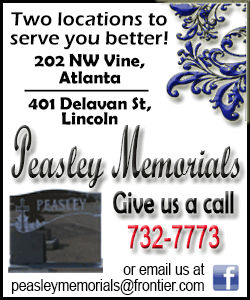|
 Within hours came photos of the dead 18-year-old's stepfather,
stony-faced, holding a cardboard sign that read: "Ferguson police
just executed my unarmed son!!!" Within hours came photos of the dead 18-year-old's stepfather,
stony-faced, holding a cardboard sign that read: "Ferguson police
just executed my unarmed son!!!"
"I've seen dead bodies on the street all my life," said Russell, 30.
"Michael Brown's death was different. I had to do something."
Russell would soon throw himself into a rapidly expanding civil
rights movement with a new cause: to bring what the movement views
as widespread police aggression and racial discrimination in the St.
Louis suburb of Ferguson, Missouri, to the nation's attention.
What began with a small vanguard of activists that met in
local cafes and churches has evolved and spread in a way unseen in a
generation.
The shooting of Michael Brown by a white police officer sparked
widespread protests, some of which turned into violent clashes with
the police. It stoked a debate over race relations, policing and the
criminal justice system.
Since then, civil rights groups have begun to coordinate in ways
they did not before Brown's death, according to interviews with a
dozen leading organizers. Through weekly conference calls, emails
and cell phone texts, groups that had acted independently now work
in tandem.
 The progress of their efforts is hard to quantify. Funding and
resources are constraints, as is the slow nature of political
change. Rioting in Ferguson and elsewhere has sometimes overshadowed
peaceful demonstrations.
But in a year in which the United States has become acutely aware of
the deaths of young black men at the hands of police, and protest
movements have emerged from Baltimore to Oakland, California, many
say they have seen a turning point.
Police in major cities now wear body cameras, a key demand of
Ferguson protesters. New York state will appoint a special
prosecutor to handle investigations when civilians are killed by
police.
"If a young black man is killed by a policeman now, it is front-page
news," said attorney Thomas Harvey, co-founder of ArchCity
Defenders, which provides legal services for St. Louis's homeless
people.
"A year ago, the same thing was seen as a blip."
RE-ENGAGED AFTER BROWN
While the death of unarmed black teenager Trayvon Martin in 2012 in
an encounter with an armed neighborhood watch volunteer in Sanford,
Florida, provoked scores of nationwide rallies, at times drawing
huge crowds, the fervor faded. Protesters returned to their day
jobs. News coverage ebbed.
Organizations like Black Lives Matter, which started as a Twitter
hashtag after Martin's death, struggled to sustain momentum.
"Black Lives Matter went viral for a while (in 2013), but then went
dormant," said co-founder Opal Tometi. "We really re-engaged once
Michael Brown died."
Black Lives Matter now has 30 chapters, with thousands of members.
National phone calls are held every month; it coordinates with about
20 other civil rights groups, including Dream Defenders, the
Organization for Black Struggle and Ferguson Action.

[to top of second column] |

These groups have planned protests to mark the Aug. 9 anniversary of
Brown's death. Hundreds are expected to gather in Cleveland next
week for a Movement for Black Lives convention. At the end of the
month, 600 legal advocates will convene in New York to discuss
strategies to help civil rights organizations with legal issues.
"I DIDN'T LOSE"
Police shootings of black men in St. Louis are not novel. Unarmed
30-year-old Christopher Jones was shot dead by police after a car
chase in July 2014. There were no protests after his death. Media
coverage was limited.
It is hard to say what sparked the outcry over Brown's death a month
later. Some point to him being left dead for four hours on the
street or the police's use of armored vehicles and other
military-style gear. Others say it was one death too many.
"You had a community of people that said enough is enough," said
Dante Barry, a New York-based organizer who went to Ferguson after
the shooting. "What you saw in Ferguson was not just about Mike
Brown."
For Taurean Russell, who had been to civil rights rallies before but
was no activist, unaware that civil rights groups were even active
in St. Louis, it started with a tweet on Aug. 9.
He called for a gathering outside the Ferguson police department;
soon, more than 100 people arrived. There Russell met other
activists, a loose group that would form the backbone of protest
groups including Hands Up United and others.
He was present at a gathering of about 15 people in the boardroom of
a St. Louis healthcare union building on Aug. 12, the first formal
meeting led by activists including Montague Simmons from the
Organization for Black Struggle and local musician Tef Po.
They spoke about logistics and their goals: demanding body cameras
for police, the formation of a citizen review board and the arrest
of the police officer who killed Brown. (A grand jury would later
decide not to bring charges against the officer, Darren Wilson).
By the end of that week, scores of protesters, lawyers and activists
were attending daily morning meetings at the local St. Mark's
Church.

Russell appeared at news conferences and on television. He became a
soft-spoken, local voice of a national movement.
"I quit my job, I quit everything," Russell said. "It is crazy to
know I was in those meetings. I've been on television, I've had
debates with lawyers. I'm not saying I won, but I didn't lose."
(Reporting By Edward McAllister; Editing by Paul Thomasch and
Jonathan Oatis)
[© 2015 Thomson Reuters. All rights
reserved.]
Copyright 2015 Reuters. All rights reserved. This material may not be published,
broadcast, rewritten or redistributed. |